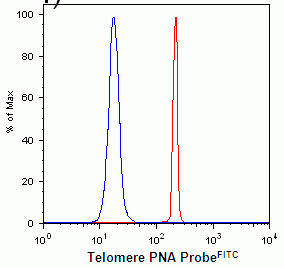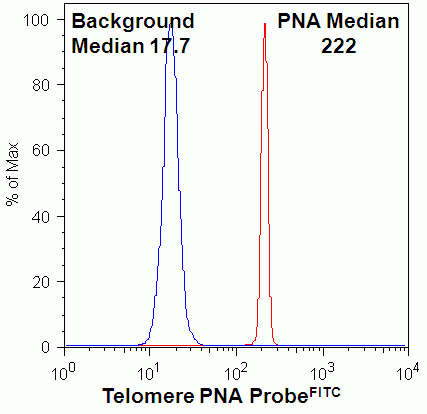Introduction
During mitosis DNA is duplicated by DNA polymerase without duplicating the end of the chromosomes the telomere region. Thus the telomere regions become shorter as the number of mitotic cycles increases. The telomere region is highly conserved in invertebrates with a common nucleotide sequence of TTAGGG the number of which vary in different species e.g. 2-20kb in man to 20-150 in mice.
Stem cells maintain their capacity to divide by the adding hexameric repeats to chromosome ends by the enzyme telomerase. This process becomes uncontrolled during cancer and thus estimating telomere length can be useful in the research field.
Flow cytometric estimation of telomere lengths
The Dako Telomere PNA Kit/FITC (K5327) uses a synthetic DNA/RNA analog, PNA which binds in a sequence specific manner. The method is optimised so that fluorescence intensity of the PNA signal is directly proportional to the length of the telomere and has a good correlation to the Southern Blot determination of telomere lengths.
After performing in situ hybridization of the PNA probe into a mixture of control cells of known telomere length and cells in which the telomere length is unknown cells are stained with propidium iodide. Flow cytometry is preformed for cell cycle analysis of G0/1 cells and the PNA-FITC signals compared to cells without the PNA-FITC probe. From median fluorescence values of PNA-FITC and background signals of control and test cells the relative telomere length (RTL) can be determined from the formula given below.


